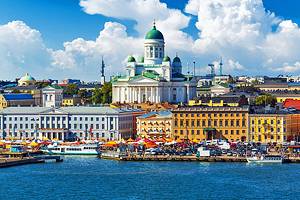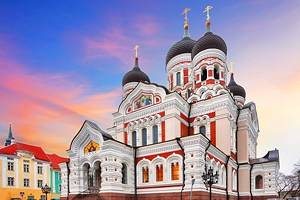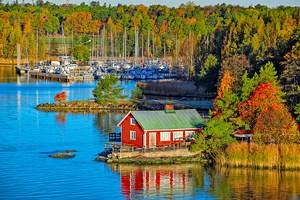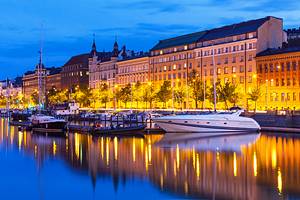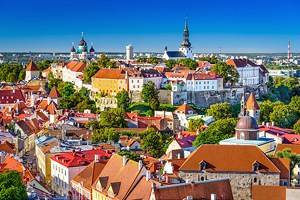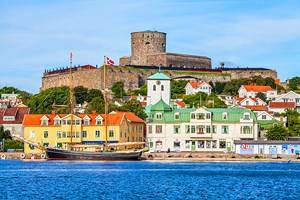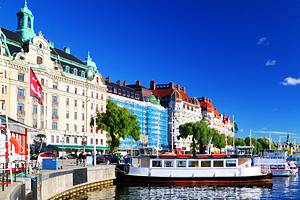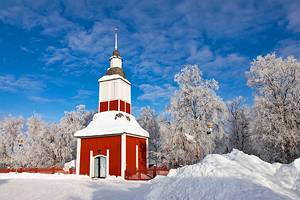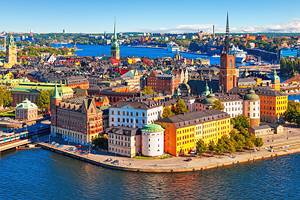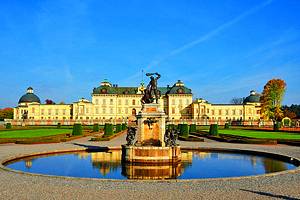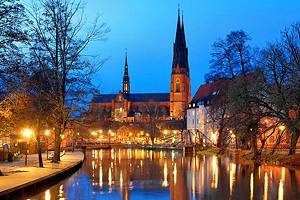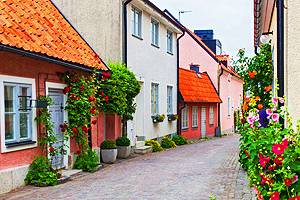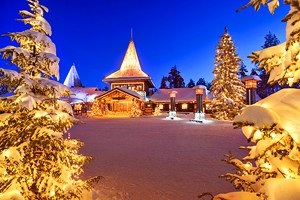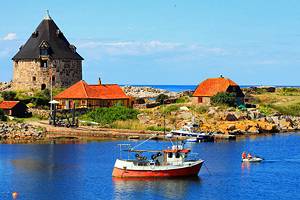Tourist Attractions in St. Petersburg, Russia
Moscow might be Russia's most modern, cosmopolitan city, but St. Petersburg is the cultural and historical heart of the country. Home to the Hermitage, one of the largest and most stunning art museums in the world, surrounded by canals, and home to beautiful white nights (when the sun never sets in summer), St. Petersburg is regal and inspiring.
First-time visitors should start at the Hermitage Museum -a museum so large, it is literally impossible to see it all in one day -and the beautiful Nevsky Avenue, flanked by opulent restaurants, churches, and palaces, and a great place for people watching. The Peterhof Palace Complex requires a day trip out of town, but it's a must-see and one of the highlights of a trip to St. Petersburg.
Whether you already know what to do when visiting or are looking for more ideas on how to spend your time, take a look at our list of top tourist attractions in St. Petersburg.
State Hermitage Museum

Founded when Empress Catherine the Great started acquiring works of art in the late 1700s, the museum didn't officially open to the public until 1852. Today, the Hermitage is the second-largest art museum in the world after the Louvre, and it's home to a collection of over three million items.
The Hermitage technically occupies six buildings, although the main part of the museum (and the building most people associate with the museum) is housed in the Winter Palace, which served as the home of the Russian emperors until 1917, and it's a massive structure with 1,500 rooms.
In addition to French Neoclassical and Impressionist art, Flemish Baroque and Italian Renaissance exhibits, the museum also holds an impressive collection of Russian art from the 11th to 19th centuries, a sizable 19th-century Egyptian antiquity collection, and a hall showcasing prehistoric art. The Hermitage has the largest collection of paintings in the world, spanning many countries and centuries.
Peter and Paul Fortress

The Peter and Paul Fortress was originally a fortified area meant to protect the state from foreign attacks. It was constructed in 1703 and then extended and modified for the following four decades. While the fortress never saw any actual combat, it still has a dark story behind it, as it served as a prison and execution quarters during the Bolshevik revolution in the early 20th century. Today, it's part of the State Museum of the History of St. Petersburg.
Within the walls of the fortress and surrounded by beautiful gardens and stone paths, there are several buildings. Perhaps the best known is the 18th-century Peter and Paul Cathedral, the final resting place of Russian czars. Prison cells, a city museum, and the Saint Petersburg Mint building (founded in 1724 to manufacture coins and still in operation) are also located within the walls of the fortress.
Palace Square

St. Petersburg's main city square is a massive open public space right in front of the Winter Palace. The Alexander Column, built in the 1830s of a single piece of red granite, stands 47 meters tall at the center of the square. It was commissioned by Alexander I to commemorate the victory against Napoleon.
Many major events in Soviet/Russian history have taken place right on the square-Tsar Alexander II was shot here in 1879, and Bolshevik troops started the Revolution here in 1917 by storming the Winter Palace, where the royalty lived. Since then, the square has also been used for marches and demonstrations, from military parades to celebrate Victory Day (which marks the end of WWII) to New Year's Eve celebrations.
Peterhof Palace

Located less than 30 kilometers from central St. Petersburg, the 18th-century Peterhof Palace complex consists of a series of buildings, several formal gardens, and a total of 173 fountains fed by underground springs. Designed in the style of the Palace of Versailles, Peterhof is best known for its "Grand Cascade," which consists of 64 fountains located on a series of terraces outside the main entrance of the palace.
The opulence of the palace itself can be discovered through a guided tour. It features 30 rooms decorated with truly imposing gold colors, lots of marble, and items brought back from Asia mixing in with Baroque-style fireplaces and giant mirrors. Although it's possible to take a bus to get here, you can also catch a boat from St. Petersburg. The ride takes 45 minutes on the Neva River and offers great views of the shoreline along the way.
Eliseyev Emporium

When the Eliseyev Emporium building was inaugurated in 1903, it was one of the most luxurious structures of its time. This might not be the case anymore, but the Art Nouveau details, stained-glass windows, crystal and metal candelabra, and hand-painted wall patterns are still quite impressive. The main attraction here, however, is the window displays, which feature moving puppets representing characters from The Nutcracker.
Today, this retail complex focuses mainly on food, with the most famous stop inside being the Eliseevy Merchants' Shop, Russia's oldest confectionery shop, which also sells high-end meats, spices, and dressings. The Eliseyev Emporium is also home to a unique homemade ice-cream shop selling flavors such as spicy basic and strawberry, green tea with jasmine, and "tender violet." Beautiful, hand-carved wooden souvenirs of traditional figures from Russian folktales are also available here.
Vasilyevsky Island
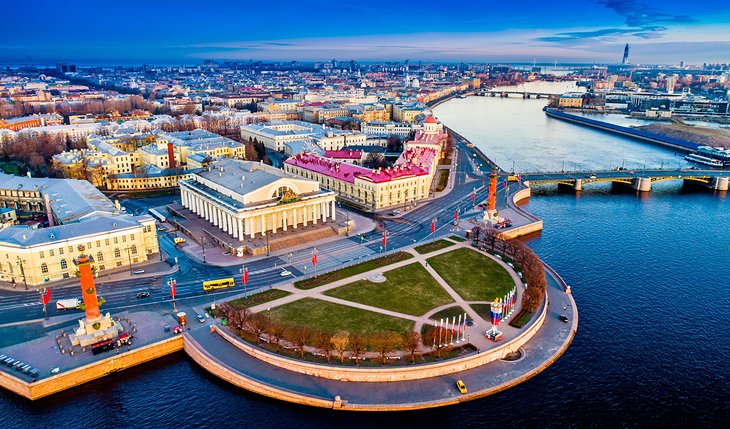
Located just across the river from the city center and the Winter Palace and connected to the mainland by two bridges and a metro line, this small island is home to a number of landmarks and beautiful parks-including a Museum of Electrical Transport; the Peter the Great Museum of Anthropology and Ethnography; the Old Saint Petersburg Stock Exchange; and the Baroque Menshikov Palace, which serves as a branch of the Heritage Museum and holds mainly 17th-century Russian art.
The Russian Academy of Sciences has several branches on the island, as well-and visitors might particularly appreciate visiting the Institute of Russian Literature, which holds original manuscripts of some of Russian's most famous writers, including beloved poet Alexander Pushkin.
Nevsky Avenue

Named after the Alexander Nevsky Lavra monastery that sits on this same street, the 4.5-kilometer-long Nevsky Prospect (or Avenue) is the heart of St. Petersburg. Home to the 18th-century Great Gostiny Dvor, one of the oldest shopping arcades in the world, Nevsky Avenue also hosts lots of high-end shops, fancy restaurants, and luxury hotels.
Nevsky Prospect is all about opulent architecture-here, palaces and churches stand side by side, including the Late Baroque Stroganov Palace; the early 19th-century Kazan Cathedral; and the Russian National Library, housed in a building dating back to the 1700s.
Even if you don't plan on doing any shopping here, the lights and atmosphere of this avenue are still worth a visit. Along the way, you'll find street artists; an original movie theater dating back to 1913; and the Anichkov Bridge, which was seriously damaged during WWII and restored without removing traces of shell damage from Nazi guns as a reminder of what happened here.
Church of the Savior on Spilled Blood
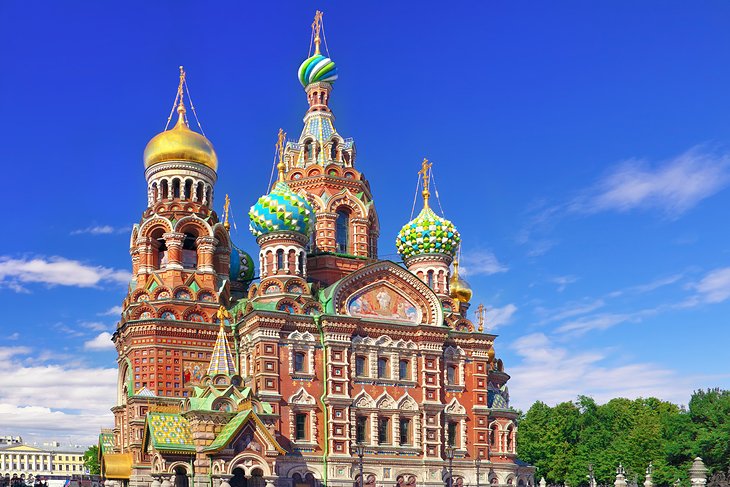
One of the most beautiful sights in St. Petersburg is this multicolored church designed in traditional medieval Russian style. Alexander III ordered its construction in 1883 on the site where his father had been assassinated two years prior.
It took over 20 years for the church to be finally completed, partly because of budget and partly because the materials needed for its interior décor (which included 7,500 square meters of mosaics to cover the walls and ceilings) weren't that easy to come by.
The church was seriously damaged during the Russian Revolution in 1917, then used as a morgue during WWII and as a potato warehouse right after. It took almost 30 years of restoration to get the building to its original splendor-but rather than reopening as a church, the structure is now a museum of mosaics.
Mariinsky Theater

Catherine the Great ordered the formation of the imperial opera and ballet troupe in the late 18th century, but it wasn't until 1860, almost 80 years later, that the company got its own theater. Once it opened, Mariinsky Theater was the most preeminent music hall in Russia-the place where major masterpieces from Tchaikovsky and Mussorgsky were first premiered.
A masterpiece of Neoclassical architecture with Neo-Byzantine design elements, the Mariinsky Theater looks opulent from every angle-from the U-shaped auditorium to the ceiling mural to the massive crystal chandelier.
Today, the theater is one of the most prestigious cultural institutions in St. Petersburg. If you plan on attending a premiere or a popular performance (such as The Nutcracker in December or January), you will need to get tickets well in advance.
Rivers and Canals
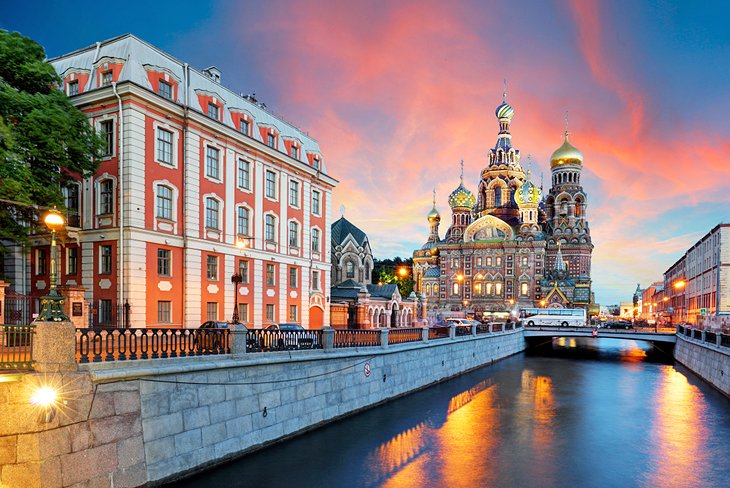
St. Petersburg's canals once played an important role in preventing floods-and while they still do keep waters at bay, they are now mainly used for transportation and to enjoy beautiful cruises down the Neva.
The canal system stretches for over 300 kilometers, with hundreds of bridges (both pedestrian and for traffic) crossing over them. The two most popular waterways are the Griboyedov Canal and the Winter Canal. The Griboyedov Canal flows under 21 bridges and alongside some of the city's most famous landmarks, including the Church of Our Savior on the Spilled Blood. The city's shortest canal, the Winter Canal, runs by the Winter Palace and the Hermitage Theater.
Both small and large boats are available to travel through the canals-some offering food, live music, or special English-language tours-including special rides to watch the bascule bridges opening at midnight.
Cruiser Aurora

The protected cruiser Aurora is a retired Russian naval ship with an armored deck. Built in the earlier 1900s, it served during the Russo-Japanese War in 1904-1905 and survived the Battle of Tsushima, where Russia suffered massive losses both in human lives and in the number of ships sunk or destroyed. It was also a shot from an Aurora cannon that marked the beginning of the Russian Revolution in 1917.
The Aurora is now anchored on the river Neva and is the most visited branch of the Central Naval Museum. Visitors can tour six different rooms onboard the ship, where they can see recreated snippets of everyday life (including how people ate and slept), photographs and paintings, and model ships.
While access to the Aurora is free, the engine room is only accessible for an extra fee. The view from the deck of the Aurora is stunning, with imperial buildings and rocking waters all around.
Saint Isaac's Cathedral

Technically speaking, St. Isaac is the world's largest Orthodox basilica, though the building has been converted into a museum, and religious service is rarely held here anymore. The cathedral was named after Saint Isaac the Confessor, a Christian monk who founded an important monastery in Constantinople.
The cathedral was finished in 1858, after 40 years of construction work plagued by criticism about the Neoclassical building being "plain and not too impressive."
The museum's collection features many ancient icon paintings, mosaic images, and colored stonework and marble. Perhaps the best reason to visit St. Isaac's Cathedral, however, is the 360-degree view you'll get from the platform at the 43-meter-tall colonnade - a magical mix of colorful rooflines, golden spires, and a number of city landmarks.
Map of Tourist Attractions in St. Petersburg, Russia
More Related Articles on PlanetWare.com
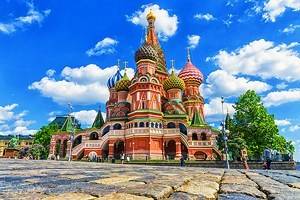
Exploring Russia: When planning a trip to Russia, it pays to look outside the main cities for some unique and awe-inspiring destinations. For stunning mountains, lakes, and never-ending tundra, check out our list of Places to Visit in Russia. If you are heading to Moscow next and want ideas on what to see while there, we have some great suggestions in our article, Tourist Attractions in Moscow.


